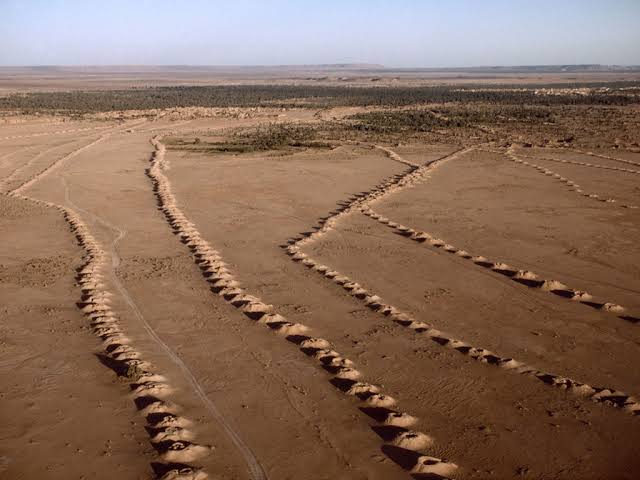Uncovering the Lost Secret of the Qanat: A 3,000-year-old engineering marvel
Imagine standing in the arid desert of ancient Iran, where the sun beats down relentlessly, and water is a scarce, precious resource. Now, picture an underground network that brings life-giving water from distant mountains to parched fields and villages. This remarkable feat of engineering, known as the qanat, was conceived 3,000 years ago and transformed barren landscapes into thriving communities.
The Birth of the Qanat: An Engineering Marvel
The qanat system stands as a testament to human ingenuity and determination. In an era without advanced machinery, ancient Iranian engineers devised a method to transport water across vast distances using only simple tools and sheer manpower. The qanat begins with a “mother well,” often located at the foot of a mountain where groundwater is accessible. From this well, a series of gently sloping underground tunnels and vertical shafts were meticulously excavated by hand, channeling water to the surface.
Breathing Life into the Desert: The Role of Vertical Shafts
As you explore the concept of the qanat, imagine the landscape dotted with vertical shafts, like a string of pearls stretching across the desert. These shafts were more than just access points; they were the lifeline for the workers toiling underground. They supplied fresh air, allowing labourers to breathe as they dug through the earth. They also provided vital exit points for the excavated soil, ensuring the tunnels remained clear and functional.
READ ALSO: Ancient Roman sandal unearthed in Bavaria reveals secrets of 2,000-year-old military life
A Sustainable Solution for Agriculture and Settlements
The qanat was not just an engineering triumph; it was a catalyst for societal transformation. By delivering a consistent and reliable water supply, qanats enabled the cultivation of crops in otherwise inhospitable regions. Villages and towns emerged along these life-giving waterways, creating fertile oases amid the harsh desert. The ability to sustain agriculture and provide drinking water allowed communities to flourish and trade to thrive, fostering a vibrant and interconnected society.
A Legacy Carved in Stone

The impact of the qanat system rippled far beyond the borders of ancient Iran. Its principles were adopted by various cultures across the Middle East and beyond, influencing water management practices for centuries. Even today, some qanats continue to function, a testament to the durability and foresight of their creators. Modern irrigation systems owe much to the knowledge embedded in these ancient watercourses.
Reflecting on Human Ingenuity
The story of the qanat is a reminder of the incredible capabilities of human innovation. Faced with the daunting challenge of arid landscapes and scarce water resources, ancient engineers devised a solution that not only met immediate needs but also ensured the sustainability of future generations. The qanat system embodies the spirit of resilience and adaptation, showing us that with creativity and determination, even the harshest environments can be transformed into thriving habitats.

Conclusion: Celebrating the Qanat Legacy
As we marvel at modern engineering wonders, let us also remember the ingenious solutions of the past. The qanat system of ancient Iran is more than a historical curiosity; it is a symbol of human resourcefulness and the enduring quest to conquer nature’s challenges.
In celebrating the qanat, we honour the legacy of those who turned the desert into a cradle of civilisation, proving that where there is a will, there is indeed a way.
Follow the Neptune Prime channel on WhatsApp:
Do you have breaking news, interview request, opinion, suggestion, or want your event covered? Email us at neptuneprime2233@gmail.com





